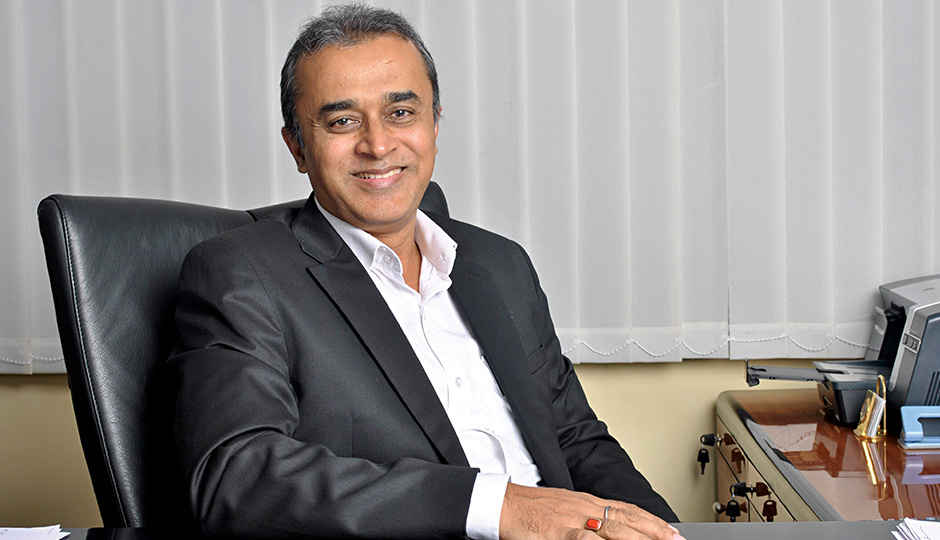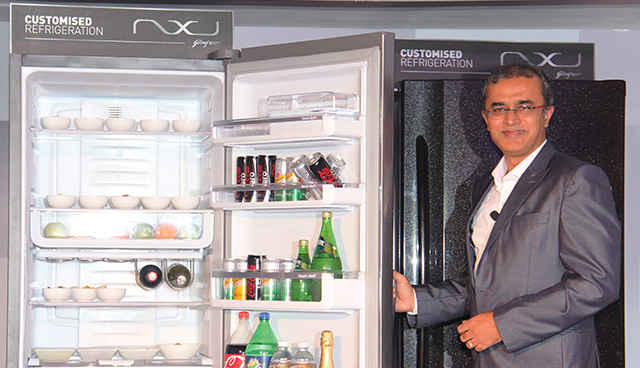Digit talks to Kamal Nandi of Godrej about the upcoming trends in smart refrigerators

The age of smart appliances is ushering in, and it seems to be on a collision course with the Internet of things. To talk all about it, we caught up with Mr. Kamal Nandi, the Business Head & Executive Vice President of Godrej, Appliances, at the launch of a brand new smart refrigerator series in India to understand the trends and technologies that are in the offing for tech-savvy customers.
The following is an excerpt from the interview which has been edited for clarity.
Digit: My very first question is, I’m a cynic at heart. So could you please explain the need for smart appliances, especially in India? Is this a mere marketing gimmick or is there really a demand among consumers to have smart appliances in their kitchen?
K.N: I think what we’re trying to really promote is real social networking. See, food is a core component of social interactions. it becomes very central to any interactions or parties that we have. But how a product can enable one to achieve this interaction is the goal we are trying to address. The latest product we’ve launched, the NXW, which stands for NeXt World, is an example of the next ‘world’ that will happen after all the social networks and real-life interactions that we are living today. The next world is where real social networks occur, where people will once again get back to earlier days like meeting together, interacting face to face. This product supports that idea. Hypothetically, if your friends are over at home and you want a crate of beer chilled super fast, you can ideally convert the entire top half of your fridge into a chiller. Similarly, if one has to store cakes or pastries along with their food, a section of the fridge can be converted for the purpose. Suppose you don’t want to go to the vegetable market every day and store more groceries in your fridge itself? The product lets you convert the fridge into a ‘provision storage’ unit. So, it has that flexibility. There are 36 possible combinations within the ‘provisions’ compartment. Each compartment has a number of shelves and each shelf can be programmed to a different temperature setting. That is the kind of flexibility available to the consumer, along with an excellent user interface both on the inside and outside of the product. One can change settings either from outside the fridge via a touchscreen on the door, or from inside the fridge via another touch panel to the side. This is by far the best technology, not only in India, but in the world with regards to this kind of flexibility.
Digit: Sounds very exciting. My next question is, there’s a lot of jargon terms that I read in the press release that was sent out, like ‘Just Right Temperature’, ‘Motion Sensing Zone Light’, ‘Stay Cool’ and ‘Smart Lock technology’ in Godrej refrigerators. Could you explain these in brief?
K.N: Let me first talk about Just Right Temperature. We’ve given this technology a simple Indian name. We’re not making it complicated for consumers. If you want to set the product at ‘Chiller’, set it at ‘Chiller’. If you want to set it at ‘pantry’, set it. So what happens is the fridge will give you the exact temperature required for chilling, or pantry, or provisions. This is ‘Just Right’ technology. Now, generally, when you open a refrigerator, the whole fridge is lit up, which we as a brand view as a waste of electricity. As an energy-conscious brand, we have been producing products which consume the least energy. With this product, we wanted to carry on the idea. So, what the product has is a very dim light for the entire fridge. If you access a particular compartment, that compartment lights up. It dims down as you take out your hand again. You’re not wasting energy by lighting up the entire fridge here. That is what our Motion Sensing Zone Light is about.
Digit: Just to speak about energy efficient, eco-friendly products,apart from the product being CFC, HFC and HCFC free, what are some the additional measures used when it comes to being eco-sensitive?
K.N: First of all, all our appliances, like A/Cs and refrigerators use ‘green gas’. This gas has about 3% potential to contribute to global warming and nearly 0% potential to cause ozone depletion. It is a natural gas called isobutane. That is something we are extremely proud of, which we’ve been doing in all our refrigerators for the last 12 years. We have churned out more than 20 million products with isobutane, and have reduced more than 20 million tons of Carbon Dioxide emissions. That is the type of benefit it brings to nature. At the same time since we’re using such a low pressure natural gas, it is highly energy efficient. In terms of energy efficiency, this product will rank higher than any other product in the market. There are no standards set for emissions as of yet, but if set, our product would qualify for the top rank.
Digit: So, my next question is something you might have come across. The Internet of Things is a popular topic being thrown around today on the internet and among technology brands. What is Godrej’s take on it?
K.N: You’re absolutely right there. That is the way life is going to be and we are recognizing that very clearly. There are developments going on right now where we are bringing out smart appliances which would be talking to one’s mobile,controlled via your mobile, and controlled from anywhere. This would be the way of life as one moves ahead. For example, this product can be made smarter by connecting it to your mobile. If you are at office and your friends are coming over tonight, you can set your fridge to chiller mode from the phone itself. This kind of technology is clearly coming and becoming more and more popular among consumers.
Digit: Can we expect Godrej to launch other smart appliances in that category?
K.N: Definitely. Within a few years this will be something that consumers will want. Smart A/Cs and refrigerators are something that can happen immediately, then washing machines and other appliances. I think what we’re developing is working on something along the lines of monitoring smart homes, so basically you can control your home from your mobile phones. The room temperature, the lighting, and so on. That is going to happen. Things can go even beyond that. It can even go into monitoring environmental levels like pollution.
Digit: One last question. Do you see any dangers of connecting smart appliances to the internet?
K.N: I do think that it does have it’s ups and downs. One should be careful that artificial intelligence does not take over human intelligence.
Jayesh Shinde
Executive Editor at Digit. Technology journalist since Jan 2008, with stints at Indiatimes.com and PCWorld.in. Enthusiastic dad, reluctant traveler, weekend gamer, LOTR nerd, pseudo bon vivant. View Full Profile





